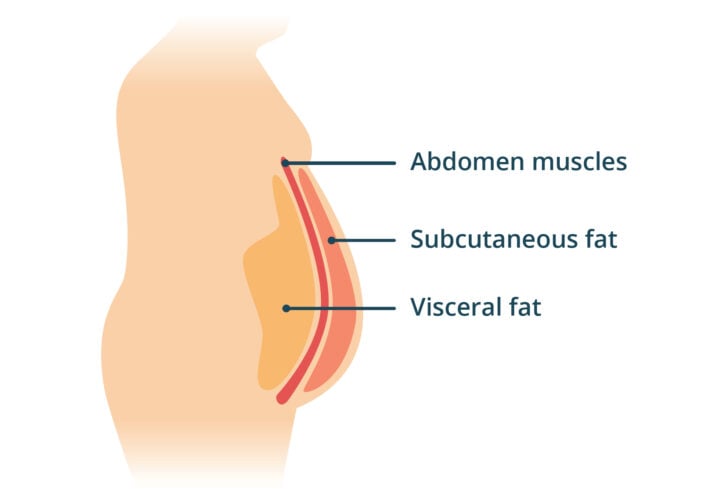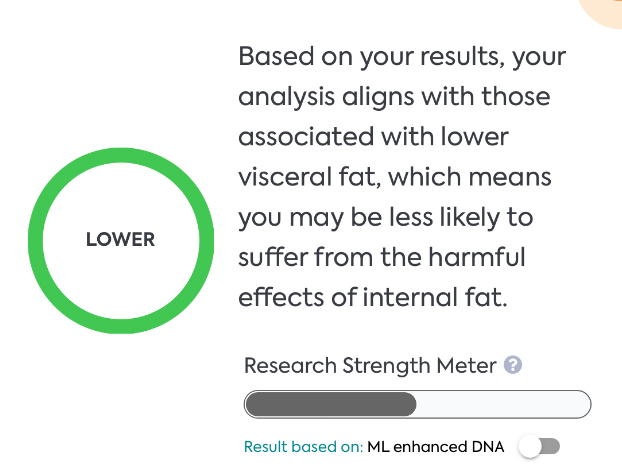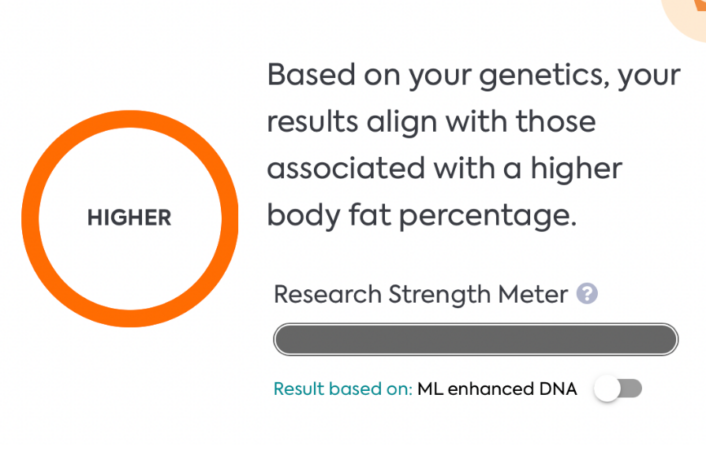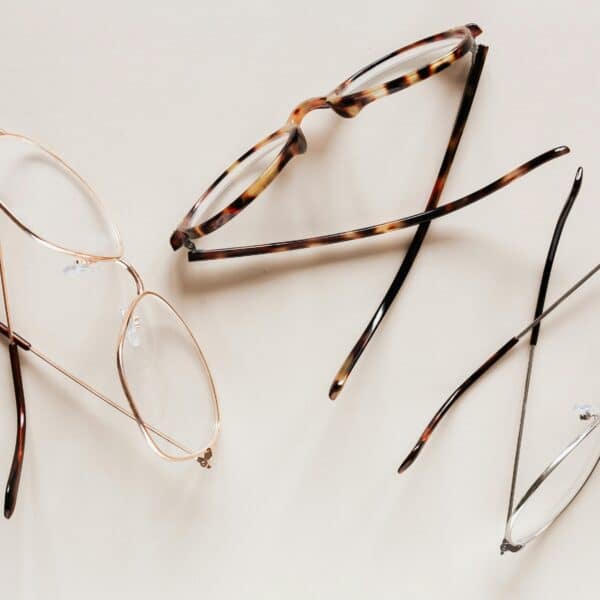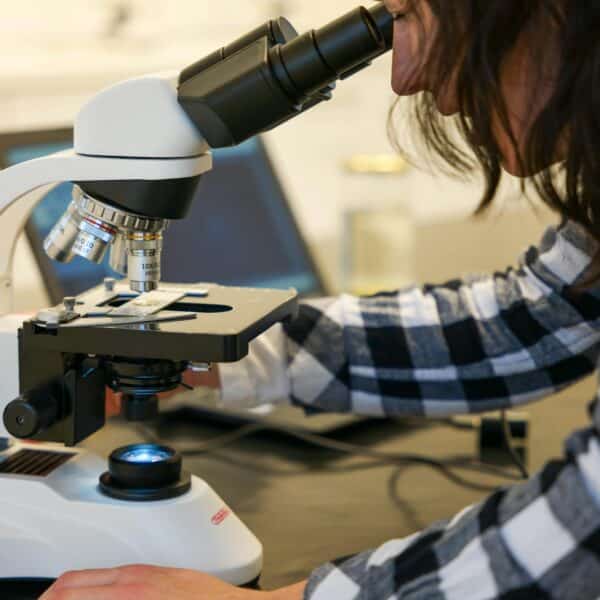Can Your Job-Related Exhaustion Be Genetic?
Aira
on
April 17, 2024
Overview
In the relentless pursuit of career success, individuals often find themselves grappling with the overwhelming burden of job-related exhaustion. This pervasive phenomenon not only affects personal well-being but also poses significant challenges to workplace productivity and satisfaction.
While environmental factors such as workload and organizational culture play pivotal roles, recent scientific inquiries suggest a genetic predisposition to experiencing job-related exhaustion. Understanding the interplay between genetic makeup and occupational stress is crucial for devising effective interventions and support systems.

What is Exhaustion?
Exhaustion, in psychological terms, refers to a state of physical and emotional depletion resulting from prolonged periods of stress or exertion. It encompasses feelings of fatigue, disengagement, and reduced efficacy, manifesting as burnout in occupational contexts.
While environmental stressors undoubtedly contribute to this condition, emerging research sheds light on the genetic underpinnings that may predispose certain individuals to heightened vulnerability.
Can Exhaustion Be Purely Job-Related?
Exhaustion, particularly when it comes to job-related burnout, is a multifaceted phenomenon influenced by various factors. While the workplace undoubtedly plays a significant role, it’s essential to recognize that exhaustion can stem from a combination of job-related stressors and personal predispositions.
Research in occupational psychology consistently demonstrates the impact of workplace factors on exhaustion levels. High work demands, lack of autonomy, and poor organizational support are commonly cited contributors to job-related burnout. Studies have shown that individuals in demanding professions such as healthcare, education, and customer service are particularly susceptible.
However, it’s crucial to acknowledge that exhaustion isn’t solely determined by external job-related factors. Genetic predispositions also play a role in an individual’s susceptibility to burnout. Genetic variations can influence an individual’s stress response mechanisms, resilience levels, and susceptibility to mental health disorders—all of which contribute to their vulnerability to job-related exhaustion.
Understanding this interplay between genetics and environmental stressors is vital for developing targeted interventions and support systems to mitigate burnout in the workplace. Recognizing this complexity is crucial for addressing and preventing job-related exhaustion effectively.
What are the Factors That Can Contribute to Job-Related Exhaustion?
Genetic Factors
A 2017 study delving into the world of shift work has uncovered intriguing findings regarding genetic factors associated with job-related exhaustion. Scientists aimed to understand why some shift workers experience fatigue and burnout while others adapt more easily to irregular schedules.
Through a genome-wide association study (GWAS) involving 176 shift workers, researchers identified a significant genetic signal linked to job-related exhaustion. This signal, observed at a specific genetic variant called rs12506228, is located near the gene responsible for encoding the melatonin receptor 1A (MTNR1A).
Further investigation revealed that individuals carrying the risk allele (A) of rs12506228 tended to have reduced expression levels of MTNR1A in brain tissue. This suggests a potential mechanism whereby genetic variation influences melatonin signaling in the brain, impacting an individual’s ability to cope with shift work schedules.
Melatonin, a hormone regulated by the circadian rhythm, plays a crucial role in maintaining our biological night. Reduced signaling through melatonin receptors, particularly type 1A receptors, could make individuals more sensitive to nocturnal light exposure, disrupting their circadian rhythms and exacerbating symptoms of job-related exhaustion.
While the study focused on shift workers, its implications extend to anyone navigating irregular work schedules. Understanding the genetic underpinnings of job-related exhaustion could pave the way for personalized interventions and support systems tailored to individual needs.
This groundbreaking research underscores the complex interplay between genetics, circadian biology, and workplace well-being. By shedding light on the genetic factors influencing tolerance to shift work, the study offers valuable insights into strategies for promoting resilience and mitigating the adverse effects of irregular work schedules.
Environmental Factors
Job-related exhaustion is influenced by a variety of environmental factors, each contributing to the overall stress experienced in the workplace. Understanding these factors is essential for organizations and individuals seeking to mitigate burnout and promote well-being. Here are some key environmental factors known to affect job-related exhaustion:
- Workload: Perhaps the most obvious factor, workload refers to the volume and intensity of tasks assigned to an individual within a given timeframe. High workloads, especially when combined with tight deadlines and insufficient resources, can lead to feelings of overwhelm and exhaustion.
- Job Demands: Beyond sheer volume, the nature of job demands can also impact exhaustion levels. Jobs that require constant multitasking, decision-making, and emotional labor are particularly draining. For instance, healthcare professionals often face high emotional demands due to the need for empathy and compassion in patient care.
- Autonomy and Control: The degree of autonomy and control employees have over their work can significantly influence their exhaustion levels. Jobs that offer greater autonomy allow individuals to make decisions and manage their workload according to their preferences and abilities, which can buffer against burnout. Conversely, a lack of autonomy, micromanagement, and rigid control structures can exacerbate feelings of frustration and helplessness, leading to heightened exhaustion levels.
- Social Support: The presence of supportive relationships and a positive social environment in the workplace can act as a protective factor against burnout. Coworker support, supervisor support, and a sense of belonging within the organization contribute to employee well-being and resilience.
- Organizational Culture: The values, norms, and practices upheld within an organization can either foster or hinder employee well-being. Cultures that prioritize work-life balance, employee recognition, and open communication tend to have lower rates of burnout. Conversely, toxic cultures characterized by competitiveness, fear of failure, and lack of transparency can fuel exhaustion and disengagement. Studies have shown that organizational culture significantly influences burnout levels, with supportive cultures associated with lower exhaustion rates.
- Work Environment: Physical aspects of the work environment, such as noise levels, lighting, and ergonomic conditions, can also impact exhaustion. Poorly designed workspaces or environments that lack amenities for relaxation and rejuvenation can contribute to stress and fatigue. Research suggests that optimizing the work environment to promote comfort and well-being can help reduce exhaustion levels and enhance productivity.
In sum, job-related exhaustion is influenced by a multitude of environmental factors spanning workload, job demands, autonomy, social support, organizational culture, and the physical work environment. Recognizing and addressing these factors is crucial for preventing burnout and promoting employee well-being in today’s demanding workplaces.
Is Job-Related Exhaustion a Medical Condition?
Job-related exhaustion, commonly referred to as burnout, is not classified as a medical condition in itself. However, it is recognized as a significant occupational phenomenon with profound implications for physical and mental health.
The World Health Organization (WHO) defines burnout as a syndrome resulting from chronic workplace stress that has not been successfully managed. While not listed as a medical condition in the International Classification of Diseases (ICD), burnout is acknowledged as a legitimate concern impacting individual well-being and organizational performance.
Research indicates that burnout is associated with a range of adverse health outcomes, including increased risk of cardiovascular disease, depression, anxiety, and decreased immune functioning.
A systematic review published in the Journal of Occupational Health Psychology found consistent evidence linking burnout to various physical and psychological health problems. Additionally, burnout can have detrimental effects on work performance, leading to decreased productivity, absenteeism, and turnover.
Although burnout itself is not a diagnosable medical condition, its consequences can have profound implications for individuals and organizations. Recognizing the signs of burnout and implementing interventions to address workplace stressors is essential for preventing its negative impact on health and well-being.
Moreover, acknowledging burnout as a legitimate occupational hazard underscores the importance of promoting healthier work environments and supporting employees’ mental and emotional resilience.
What are the Symptoms of Job Burnout?
Job burnout manifests through a variety of physical, emotional, and behavioral symptoms, which can significantly impair an individual’s well-being and performance in the workplace. Here are some common symptoms of job burnout supported by scientific research:
- Chronic Fatigue: Persistent feelings of exhaustion that go beyond typical tiredness and may not be alleviated by rest or relaxation. This fatigue can impact both physical and mental energy levels, leading to decreased motivation and productivity.
- Cynicism and Detachment: A negative and cynical attitude towards work, colleagues, and tasks. Individuals experiencing burnout may become emotionally distant, disengaged, or indifferent to their responsibilities and the goals of their organization.
- Reduced Efficacy: Feelings of inefficacy and decreased confidence in one’s abilities to perform tasks effectively. Burnout can erode self-esteem and undermine a person’s sense of accomplishment, leading to self-doubt and diminished job satisfaction.
- Physical Symptoms: Burnout can manifest in various physical symptoms, including headaches, muscle tension, gastrointestinal issues, and sleep disturbances. These physical manifestations are often linked to chronic stress and can exacerbate feelings of exhaustion and discomfort.
- Increased Irritability: Heightened irritability, impatience, or frustration in response to minor inconveniences or challenges. Individuals experiencing burnout may have a shorter fuse and struggle to regulate their emotions, leading to conflicts with colleagues and decreased interpersonal effectiveness.
- Withdrawal from Responsibilities: Avoidance of work-related tasks or responsibilities, procrastination, or absenteeism. Burnout can lead individuals to disengage from their work duties as a coping mechanism to avoid further stress or feelings of overwhelm.
- Impaired Concentration and Memory: Difficulty focusing, maintaining attention, or retaining information. Burnout can impair cognitive functioning, leading to decreased performance and effectiveness in completing tasks.
Recognizing these symptoms is crucial for early intervention and prevention of burnout. Employers and individuals alike should prioritize strategies to manage stress, promote work-life balance, and foster a supportive work environment to mitigate the risk of burnout and promote overall well-being.
Can You Recover from Job Burnout Without Quitting Your Work?
Yes, it is possible to recover from job burnout without quitting your work. Research suggests that implementing targeted interventions and making changes to both individual behaviors and organizational practices can facilitate burnout recovery.
Studies have found that interventions such as cognitive-behavioral therapy, mindfulness-based stress reduction, and relaxation techniques can effectively reduce burnout symptoms and improve well-being among individuals experiencing job-related exhaustion.
Additionally, organizational initiatives aimed at promoting work-life balance, providing social support, and addressing job demands can play a crucial role in burnout recovery. Creating a supportive work environment, fostering open communication, and offering resources for stress management can help individuals regain a sense of control and fulfillment in their roles.
It’s important to note that burnout recovery is a gradual process that requires commitment and effort from both the individual and the organization. By implementing evidence-based strategies and making systemic changes to address the root causes of burnout, individuals can often experience significant improvement in their well-being and job satisfaction without resorting to quitting their work.
Ways to Lessen Job-Related Exhaustion
Addressing job-related exhaustion or burnout requires a multifaceted approach that encompasses both individual strategies and organizational initiatives. Here are several evidence-based ways to lessen job-related exhaustion:
Set Boundaries
Establish clear boundaries between work and personal life to prevent work-related stress from encroaching on your downtime. Research suggests that maintaining a healthy work-life balance is essential for mitigating burnout and promoting overall well-being.
Practice Self-Care
Prioritize self-care activities such as exercise, adequate sleep, healthy eating, and relaxation techniques. Engaging in regular physical activity has been shown to reduce stress levels and improve mood, while sufficient sleep is crucial for cognitive functioning and emotional regulation.
Seek Social Support
Cultivate supportive relationships both inside and outside of the workplace. Research indicates that social support can buffer against the negative effects of job stress and enhance resilience. Connecting with colleagues, friends, or a support network can provide emotional validation and practical assistance in coping with work-related challenges.
Manage Workload
Take proactive steps to manage your workload effectively. This may involve prioritizing tasks, setting realistic goals, delegating responsibilities when possible, and communicating with supervisors about workload concerns. Studies have found that perceived control over one’s workload is associated with lower levels of burnout.
Practice Mindfulness
Incorporate mindfulness practices into your daily routine to cultivate present-moment awareness and reduce stress. Mindfulness-based interventions, such as mindfulness meditation and yoga, have been shown to decrease burnout symptoms and improve psychological well-being.
Develop Coping Skills
Enhance your coping skills to better manage job-related stressors. Cognitive-behavioral techniques, such as cognitive restructuring and problem-solving strategies, can help individuals reframe negative thoughts and approach challenges more effectively. Building resilience through adaptive coping mechanisms can mitigate the impact of stressors on mental health.
Take Regular Breaks
Schedule regular breaks throughout the workday to rest and recharge. Research suggests that brief periods of relaxation or leisure activities during work hours can replenish cognitive resources and prevent mental fatigue. Incorporating micro-breaks or engaging in activities that promote relaxation, such as deep breathing exercises or listening to music, can help alleviate job-related exhaustion.
Seek Professional Help
If job-related exhaustion persists despite self-help strategies, consider seeking support from a mental health professional. Therapy or counseling can provide a safe space to explore underlying stressors, develop coping skills, and gain perspective on work-related challenges.
Advocate for Organizational Change
Advocate for organizational policies and practices that promote employee well-being and mitigate job-related stressors. Encourage open communication, flexible work arrangements, and initiatives to address work-life balance. Research shows that supportive organizational climates are associated with lower levels of burnout and higher job satisfaction among employees.
Engage in Meaningful Work
Find ways to connect with the intrinsic meaning and purpose of your work. Research suggests that experiencing a sense of fulfillment and engagement in one’s job can buffer against burnout. Identifying meaningful goals, aligning values with work tasks, and seeking opportunities for professional growth and development can enhance job satisfaction and reduce exhaustion.
Lessening job-related exhaustion requires a holistic approach that integrates individual self-care strategies with organizational support and systemic changes. By prioritizing well-being, managing workload effectively, fostering social connections, and advocating for organizational change, individuals can mitigate burnout and thrive in their professional lives.
LifeDNA’s Job-Related Exhaustion Trait Report
Unlock the secrets of your genetic blueprint with LifeDNA’s Job-Related Exhaustion Trait Report. Our scientifically-backed Wellness Report offers comprehensive insights into your unique genetic profile, empowering you to optimize your well-being and thrive in every aspect of life.
Discover how your genetic predispositions influence your susceptibility to job-related exhaustion and gain valuable strategies for preventing burnout. Understanding the genetic factors contributing to exhaustion can help you make informed lifestyle choices and implement targeted interventions to manage stress more effectively.
But that’s not all—explore our range of trait reports under the Wellness Report, including the Proinsulin to Insulin Conversion Trait Report, Excessive Sweating Trait Report, and Appendicitis Trait Report. With nearly 200 trait reports available across seven main categories, LifeDNA offers unparalleled depth and breadth in genetic insights.
Whether you’re focused on nutrition, fitness, sleep, skin health, or cognitive function, LifeDNA has you covered. Our reports provide actionable recommendations tailored to your genetic makeup, guiding you on your wellness journey with precision and confidence.
Start your wellness journey today with LifeDNA. Choose from our range of affordable plans and unlock the secrets of your DNA to live your healthiest, happiest life. Your genetic potential awaits—embrace it with LifeDNA.
Summary
- Job-related exhaustion, often known as burnout, is a widespread issue affecting both personal well-being and workplace productivity.
- Exhaustion stems from prolonged stress or exertion, leading to feelings of fatigue, disengagement, and reduced efficacy.
- Recent research suggests a genetic predisposition to job-related exhaustion, shedding light on the interplay between genetics and occupational stress.
- A significant genetic signal linked to job-related exhaustion was identified near the gene encoding the melatonin receptor 1A (MTNR1A).
- Individuals with a specific genetic variant, rs12506228-A, tended to have reduced expression levels of MTNR1A in brain tissue, affecting melatonin signaling and circadian rhythms.
- Environmental factors such as workload, job demands, autonomy, social support, organizational culture, and work environment also contribute to job-related exhaustion.
- While burnout is not classified as a medical condition, it can lead to adverse health outcomes and severely impair work performance.
- Symptoms of burnout include chronic fatigue, cynicism, reduced efficacy, physical symptoms, increased irritability, withdrawal from responsibilities, and impaired concentration.
- Recovery from burnout is possible through interventions such as self-care, seeking social support, managing workload, practicing mindfulness, developing coping skills, taking regular breaks, seeking professional help, advocating for organizational change, and engaging in meaningful work.
- Lessening job-related exhaustion requires a holistic approach that integrates individual and organizational strategies to promote well-being and prevent burnout.
References
- https://www.webmd.com/a-to-z-guides/signs-exhaustion
- https://www.mayoclinic.org/healthy-lifestyle/adult-health/in-depth/burnout/art-20046642#:~:text=Job%20burnout%20is%20a%20type,as%20depression%2C%20are%20behind%20burnout.
- https://www.sciencedirect.com/science/article/pii/S2772501421000014
- https://www.ncbi.nlm.nih.gov/pmc/articles/PMC3319901/
- https://www.ncbi.nlm.nih.gov/pmc/articles/PMC7822247/
- https://academic.oup.com/sleep/article/40/1/zsw011/2980926?login=false
- https://growthsignals.co/how-a-lack-of-autonomy-contributes-to-employee-burnout/
- https://www.who.int/news/item/28-05-2019-burn-out-an-occupational-phenomenon-international-classification-of-diseases
- https://psycnet.apa.org/manuscript/2019-60059-001.pdf
- https://www.mayoclinic.org/healthy-lifestyle/adult-health/in-depth/burnout/art-20046642
- https://www.everydayhealth.com/burnout/what-to-do-about-burnout-if-quitting-is-not-an-option/
- https://www.mindtools.com/apt37nj/avoiding-burnout
- https://www.ncbi.nlm.nih.gov/pmc/articles/PMC4776732/
*Understanding your genetics can offer valuable insights into your well-being, but it is not deterministic. Your traits can be influenced by the complex interplay involving nature, lifestyle, family history, and others.
Our reports and suggestions do not diagnose or treat any health conditions or provide any medical advice. Consult with a healthcare professional before making any major lifestyle changes or if you have any other concerns about your results.










